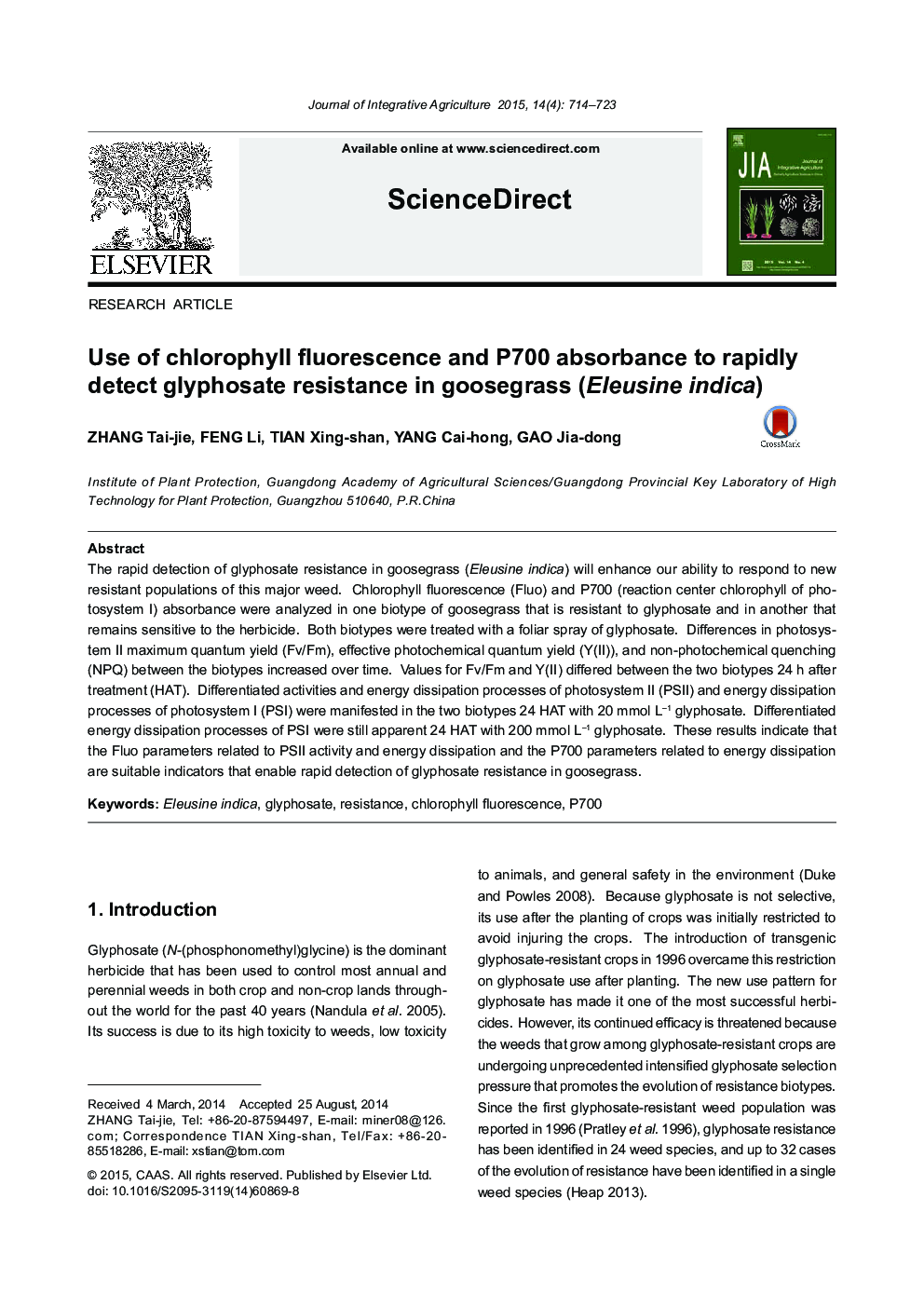| Article ID | Journal | Published Year | Pages | File Type |
|---|---|---|---|---|
| 4494362 | Journal of Integrative Agriculture | 2015 | 10 Pages |
The rapid detection of glyphosate resistance in goosegrass (Eleusine indica) will enhance our ability to respond to new resistant populations of this major weed. Chlorophyll fluorescence (Fluo) and P700 (reaction center chlorophyll of photosystem I) absorbance were analyzed in one biotype of goosegrass that is resistant to glyphosate and in another that remains sensitive to the herbicide. Both biotypes were treated with a foliar spray of glyphosate. Differences in photosystem II maximum quantum yield (Fv/Fm), effective photochemical quantum yield (Y(II)), and non-photochemical quenching (NPQ) between the biotypes increased over time. Values for Fv/Fm and Y(II) differed between the two biotypes 24 h after treatment (HAT). Differentiated activities and energy dissipation processes of photosystem II (PSII) and energy dissipation processes of photosystem I (PSI) were manifested in the two biotypes 24 HAT with 20 mmol L−1 glyphosate. Differentiated energy dissipation processes of PSI were still apparent 24 HAT with 200 mmol L−1 glyphosate. These results indicate that the Fluo parameters related to PSII activity and energy dissipation and the P700 parameters related to energy dissipation are suitable indicators that enable rapid detection of glyphosate resistance in goosegrass.
